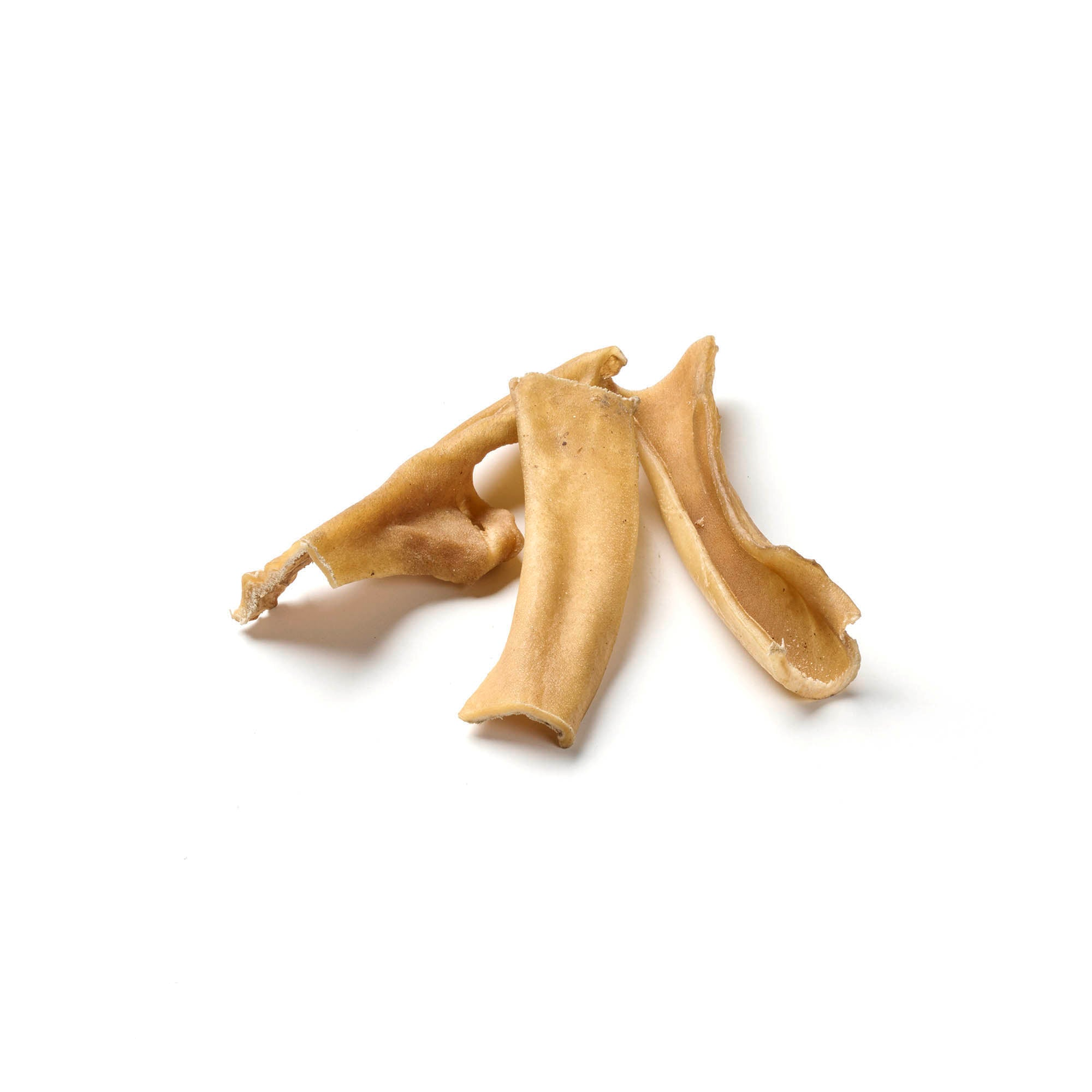
Can dogs cry? - Find out here
Share
There has been little scientific research into the subject of crying in dogs. Are dogs really capable of crying like we humans do? We want to get to the bottom of this.
Table of contents
- Can dogs cry from sadness?
- Dogs don’t cry like humans!
- How do dogs grieve?
- Some breeds “tear” more
- Dog's tear duct blocked
- Foreign body in the eye
- Allergies
- Inflammation or irritated eyes
- Injured cornea
- Conclusion
Can dogs cry from sadness?
Dogs don’t cry like humans!
First things first: Unlike humans, dogs do not cry for emotional reasons and strong feelings, at least there is no solid evidence to support this. Of course, animals have tear glands and tear ducts to keep their eyes moist and healthy.
Just like with humans, tears protect the surface of the eyes and flush out foreign bodies. Yes, dogs can cry. But do they cry because they are sad? Probably not... When dogs "cry", the most likely cause is medical or anatomical.
Delicious chews for your faithful companion now available!
How do dogs grieve?
Of course, dogs have emotions too. They are full of joy and zest for life, they are afraid, or sometimes withdrawn and introverted. When an important person or animal friend is no longer there, dogs can also become very sad. But they express this feeling in a completely different way. Four-legged friends then whine, howl or cry, for example.
Restlessness and nervous "searching" for the missing companion or person is also typical. Apathy, a hunched gait, a lack of motivation to go for walks and play, destroying things for no reason, but also refusing food, doing a business in the house or even aggressive behavior can be expressions of grief. This means that if your dog is crying, there are usually other reasons for it.
Some breeds “tear” more
Due to their breed and anatomy, some dogs such as Rottweilers, Chow Chows, Retrievers or Mastiffs often suffer from watery eyes. In Chihuahuas, tears do not flow through the nose like in healthy animals, but directly through the eye. To rule out the possibility that glaucoma or even a tumor is behind the symptoms, a visit to the vet is recommended.
Dog's tear duct blocked
If the tear ducts are blocked, the tear fluid can overflow. This then looks as if the dog is crying - one of the most common causes of watery eyes in dogs.
Excessively watery eyes are known in medical jargon as epiphora. Because the fur around the eyes is often moist, skin irritation can occur. If the tear ducts remain blocked for a long time, you should take your dog to the vet.
Foreign body in the eye
Often, eye irritation and short-term redness of the dog's eye are not very dramatic. This is the case when a grain of dust, hair, sand or other dirt gets into your four-legged friend's eye.
To check this, you can - if your dog allows it - carefully lift the eyelids and look for dirt. The eyes should only water long enough to wash out the nuisance. If you find something, you can remove it with the corner of a tissue.
You can also carefully rinse the eye with cold water. If none of this helps or you have no experience with it, the same applies here: go to the vet.
Make your dog happy with our tasty chews!
Allergies
Just like in humans, allergies can irritate a dog's eyes and cause watery eyes.
Dogs can be allergic to many things, such as seasonal plants, pollen, dust, detergents, dander, smoke, or food. The dog is not "crying" because he is uncomfortable, but because an allergy is irritating his eyes.
Other signs of allergies include rash, swelling, sneezing or coughing. You can find out the cause of the allergic reaction by having your pet do an allergy test at your vet.
Inflammation or irritated eyes
Other reasons for watery dog eyes are inflamed or irritated eyes. Irritation is often caused by drafts: did your dog get too much wind while driving in the car and looking out of the open window?
Yellow, slimy or bloody tears, for example, are signs of eye inflammation. The eyes are often also swollen and red. One of the most common eye diseases in dogs is conjunctivitis. This can be the result of dry eyes or an infectious disease.
Symptoms of conjunctivitis in dogs include red eyes, usually swollen eyelids and increased tear production. You should definitely see a veterinarian at the first signs of inflammation in order to treat the cause as quickly as possible and avoid injury to the cornea.
Injured cornea
If you find large particles of dirt in the eye or if your dog has injured its eye while playing around and its eye is watering heavily, you should not waste any time and go to the vet immediately before your dog's eyesight is permanently damaged.
Conclusion
Not all tears are the same!
The emotional world of dogs and their form of expression is still a phenomenon that needs to be further researched. The question of whether dogs cry for emotional reasons has not yet been scientifically clarified and is controversial.
Currently, it is believed that only humans are capable of crying for emotional reasons. However, this does not mean that dogs do not have feelings and cannot become emotional.
It just means that they don't express these feelings by crying. If your dog's tears are rolling, it's more likely that there's something wrong with his eyes. Your loyal companion has physical problems - and if in doubt, these should always be examined urgently, preferably by a vet.
This is especially true if the eye discharge is not watery but slimy and has a different color. No time should be lost if your furry friend squints his eyes frequently and is visibly suffering from watery eyes.
Delicious dog snacks for pure enjoyment are available from us!













